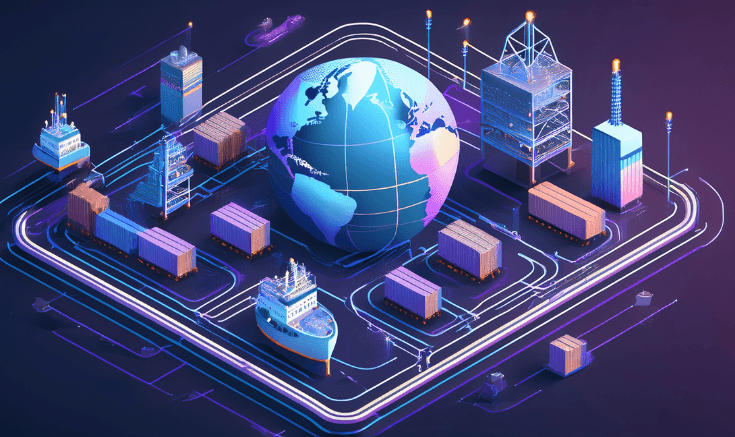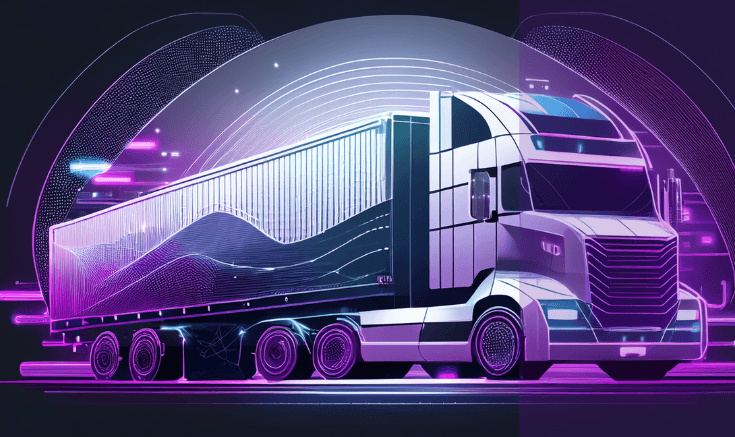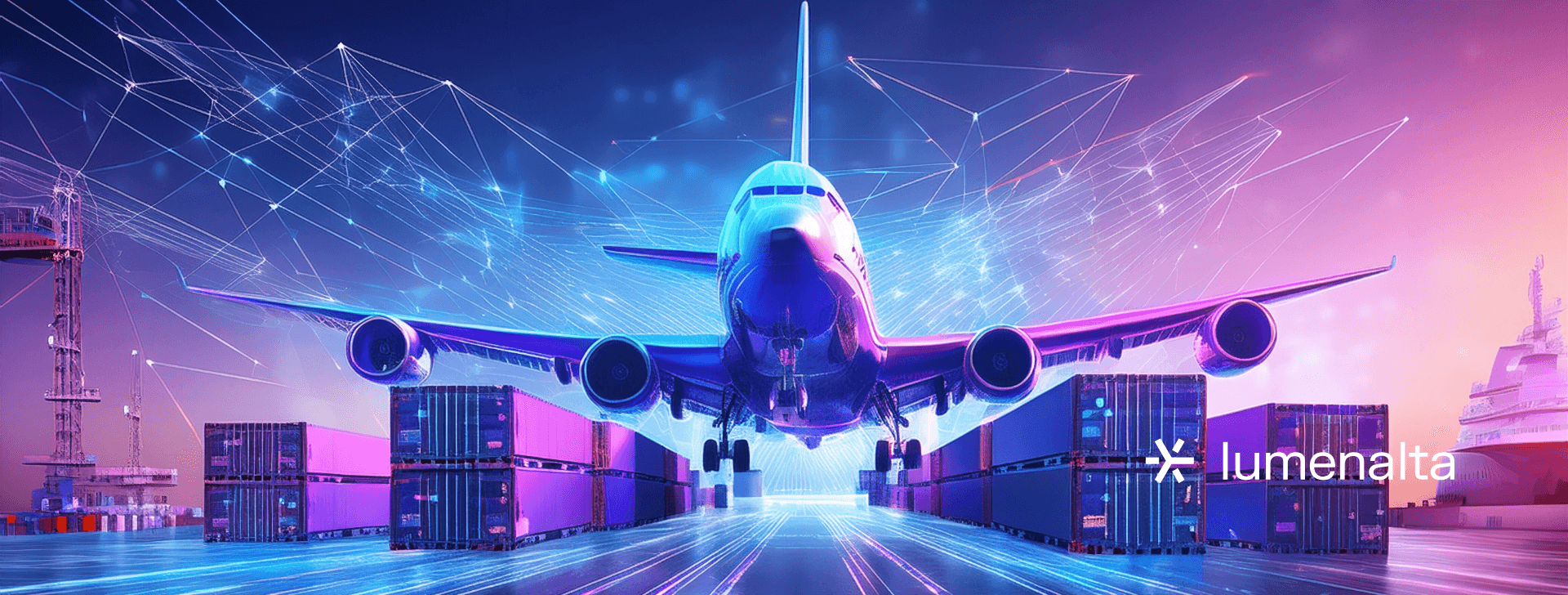

A guide to sustainable freight transportation (updated 2025)
MAR. 7, 2025
4 Min Read
Reducing emissions while improving profitability is a feasible objective for businesses aiming to refine global shipping operations.
Sustainable freight transportation goes beyond basic compliance to offer a path toward consistent returns and investor confidence. Organizations can boost efficiency, minimize overhead, and maintain a forward-looking posture by emphasizing cleaner engines, data analytics, and route coordination. This approach unites ecological responsibility with tangible business gains, presenting a compelling value proposition in logistics.
Key-Takeaways
- 1. Cleaner engines and optimized routes create measurable cost savings and reduce emissions.
- 2. Partnering with eco-focused forwarders leads to shared benefits in efficiency and accountability.
- 3. Sustainable freight equipment integrates modern features that cut overhead and meet regulatory targets.
- 4. Data-focused analytics reveal operational insights that guide more productive shipping methods.
- 5. Embracing green shipping practices supports investor interest and opens new revenue channels.
What is sustainable freight transportation?

Sustainable freight transportation focuses on moving goods in ways that reduce strain on the global climate while preserving profit margins. It takes into account greenhouse emissions, fuel efficiency, and resource conservation across shipping networks. It also promotes solutions that rely on cleaner technology and data insights to address logistical bottlenecks. This approach blends responsibility with cost savings, creating a powerful model that supports both the planet and business goals.
Some organizations adopt eco-friendly routes, optimize vehicle capacities, and invest in resource-saving solutions. Others integrate advanced planning tools and collaborative technologies to reduce idle time, wasted space, and overhead. The central idea remains the same: make shipping cleaner, more efficient, and ready to adapt to future regulations. Sustainable freight transportation brings a strategic edge to your supply chain by aligning with modern corporate responsibility standards.
“Sustainable freight transportation focuses on moving goods in ways that reduce strain on the global climate while preserving profit margins.”
Importance of sustainable freight transportation in 2025
Industry forecasts point to stricter regulations on emissions and resource consumption within global shipping channels by 2025. Shippers and carriers who prioritize sustainable freight transportation can expect better access to new partnerships, as well as reduced long-term expenses. This focus reflects an awareness that day-to-day practices have measurable impacts on both operational budgets and the surrounding ecosystem. Adopting energy-saving measures now supports cost-effectiveness and fosters alignment with evolving global standards.
Business decision-makers focus on resilience and scalability, and green initiatives provide a strong foundation for both. Practical strategies such as route optimization and integrated data analytics lower overhead while meeting corporate accountability goals. In 2025, organizations that invest in planet-friendly shipping may discover fresh business opportunities and stronger investor backing. Sustainability translates into tangible returns, highlighting the business case for forward-thinking transportation methods.
Benefits of sustainable freight transportation
Organizations that adopt greener methods of shipping often see long-term savings and new market prospects. This section explores several key advantages, including reduced emissions and higher customer satisfaction. Each point underscores why focusing on resource efficiency and cleaner engines makes sense for your overall growth strategy. With that in mind, here are five important benefits you might find through sustainable freight transportation.
- Lower fuel costs: Efficient vehicles and optimized routes cut down on unnecessary fuel consumption, which saves money. Shifting to newer technologies often leads to less reliance on traditional fuels, contributing to budget stability.
- Reduced carbon footprint: Electric trucks, hybrid vessels, and biodiesel engines limit polluting emissions. These options help companies align with stricter regulations while meeting consumer expectations for greener operations.
- Streamlined supply chain: Shorter transit routes, better load management, and advanced scheduling minimize waste and delays. This translates into smoother operations, making your shipments arrive on time with fewer overheads.
- Positive brand image: Businesses that adopt low-emission shipping often gain recognition for their responsible choices. This can attract partners and investors who value a forward-thinking approach to logistics.
- Improved regulatory compliance: Forward-planning around mandated emissions targets helps avoid penalties and potential disruptions. It also provides easier access to permits and trade opportunities, which can significantly boost your reach.
These advantages reflect a balanced approach that meets both commercial and environmental goals. On top of that, stable costs and potential partnerships indicate how sustainability can become an asset. Green shipping methods have evolved to be more cost-effective and technologically mature, so adoption hurdles are smaller than they used to be. The next step is to review practical strategies that address efficiency head-on.
Key strategies for sustainable freight

A well-planned roadmap ensures freight activities remain functional, cost-sensitive, and aligned with planetary considerations. Shippers may choose to strengthen their use of data analytics, collaborate with carriers that use alternative fuels, or rework their distribution strategies. Each method targets a specific challenge in freight operations, from emissions to delivery times. The following sections explore tactical methods under this umbrella.
Route planning and consolidation
Reducing unnecessary mileage is a central priority in sustainable freight strategies. Some providers combine multiple shipments headed in the same direction to fill up vehicles more effectively, cutting down on half-empty runs. Real-time updates can guide rerouting when traffic or weather conditions threaten fuel efficiency. Organizations that integrate route consolidation into daily scheduling often see significant cost savings and fewer emissions.
Alternative fueling programs
Cleaner fuels like compressed natural gas offer a path toward lower emissions and reduced costs. Some fleets adopt electric vehicles to curtail fossil fuel usage altogether, especially on shorter routes. There is an upfront investment in infrastructure or equipment, but it often pays off through operational savings. Carriers that plan fueling stations strategically and manage charging times effectively see a direct impact on both budgets and public perception.
Data-focused analytics for resource efficiency
Data-focused planning helps pinpoint inefficiencies that drive up expenses or emissions. This can include analyzing load factors to avoid wasted space, as well as monitoring engine performance to schedule maintenance at optimal intervals. Companies that capture large sets of shipment details can uncover trends that guide better decisions on fuel usage, routing, and capacity planning. This level of insight supports continuous improvement and fosters agile responses to market shifts.
Strategies like these may combine easily with other initiatives, including staff training and intermodal shipping. The key is to prioritize approaches that address your greatest operational and sustainability needs. A clear plan of action influences investor confidence, brand standing, and overall shipping reliability. It also sets the stage for implementing examples of sustainable freight solutions in your daily logistics processes.
“Data-focused planning helps pinpoint inefficiencies that drive up expenses or emissions.”
Examples of sustainable freight

Various companies and industries have tested distinct approaches to make shipping cleaner and more efficient. Each method relies on tailored tactics that match the unique nature of different cargo types and routes. The ideas below are not limited to one sector and can fit a range of business models. Here are several examples that highlight possible actions for your organization.
- Electrified local deliveries: Some urban carriers use electric vans for last-mile transport to reduce noise and emissions. This aligns with city regulations and can ease congestion in urban zones.
- Hybrid ship propulsion: Certain container vessels run on dual-fuel systems that incorporate cleaner fuel blends. Over time, this shift lowers greenhouse gas outputs and enhances cost stability.
- Regional freight consolidation hubs: A centralized point collects goods from multiple suppliers in a given territory, reducing partial loads and wasted mileage. This streamlined approach helps carriers run fuller trucks.
- Improved packaging design: Shippers use lighter, sturdier materials to limit product damage and slash shipping weights. These tweaks may seem minor, yet they contribute to lower fuel consumption and reduced overhead.
- On-site renewable energy for warehouses: Some logistics hubs leverage solar panels to power loading equipment and facility lighting. This creates a degree of energy independence and can yield favorable operational expenses.
These efforts show that it is entirely possible to make incremental shifts that add up to a larger impact. Although each organization faces unique conditions, adopting any of these examples can produce measurable returns. Some may even reveal new revenue streams or attract a wider range of partners. Equipment also plays a key role in ensuring that shipping decisions remain adaptable and resource-friendly.
Sustainable freight equipment

The choice of vessels, trucks, and cargo-handling tools has a direct effect on cost efficiency and overall ecological outcomes. Lighter materials, regenerative braking systems, and automated handling devices promote minimal waste and fuel usage. Replacing older vehicles with modern fleets is one way to address emissions and maintenance overhead in a single step. Another approach is to retrofit existing equipment with low-emission engines and advanced monitoring sensors.
Sustainable freight equipment hinges on reliability, operational speed, and synergy with your existing infrastructure. Electric forklifts, for instance, can cut operating noise and eliminate harmful fumes in loading docks. The long-term financial gains include fewer repairs, less downtime, and better compliance with regulations. These benefits translate into improved resource allocation and stronger bottom-line performance.
Sustainable freight forwarding practices
Partnering with a forwarder that champions eco-friendly shipping can accelerate your efforts. This includes transparent tracking, carbon offset programs, and dynamic routing that suits each shipment’s origin and destination. Many forwarders also employ data analytics to maintain route efficiency and keep clients informed. Several proven practices fall into this category.
Partner alignment and contract terms
Shippers can establish contract clauses that reward cleaner performance metrics, such as minimal idle time or verified emissions tracking. These agreements set clear benchmarks and allow both parties to focus on shared objectives. Some forwarders even incorporate carbon credits that match the emissions from each load. This proactive stance underscores a long-term vision of resource conservation and operational gains.
Hybrid intermodal solutions
Mixing road, rail, and sea transport is another technique. Each mode has pros and cons, and the right combination can reduce total fuel usage. For longer distances, rail options typically produce fewer emissions per ton-mile. Forwarders that adopt this balanced approach often create more stable routes and reliable transit schedules.
Evaluating forwarders on these criteria encourages higher accountability across the logistics chain. A robust set of practices leads to consistent results and greater flexibility in meeting clients’ evolving needs. These efforts also support better planning around shifting regulations and stakeholder interests. Challenges do arise, though, and acknowledging them is a key step toward realistic progress.
What are the challenges in sustainable freight transport?
Adopting cleaner shipping often involves careful planning, financial forecasting, and collaboration with multiple players. The expenses of new equipment or infrastructure upgrades may appear daunting at first. Fluctuating fuel costs and shifting regulations add another layer of complexity. Despite these hurdles, many organizations find solutions that balance short-term feasibility with long-term benefits.
- High initial cost: New vehicles and cleaner fuels may require a large upfront investment. However, these expenses often pay off over time through maintenance savings and better asset longevity.
- Infrastructure gaps: Charging stations and specialized fueling setups are not always available across major routes. This can complicate scheduling and introduce the need for alternative resources.
- Coordination hurdles: Multi-party supply chains can make it hard to unify greener practices or share data efficiently. A lack of standardization across networks sometimes slows down forward momentum.
- Regulatory uncertainty: Standards around emissions and resource consumption vary by region, which can create confusion. Shippers have to stay current on frequent updates that affect their routes and vehicles.
- Resistance to operational changes: Staff, partners, or leadership teams may be reluctant to rethink familiar processes. Training and internal buy-in often require additional time and resources to implement effectively.
Overcoming these pain points calls for a combination of strategic planning, stakeholder engagement, and technology adoption. Many companies approach these challenges incrementally, tackling the most pressing barriers first. The payoff is worth it, particularly for those focused on profitability and brand value. Predictions for 2025 suggest further growth in this space, supported by ongoing innovations.
2025 predictions for sustainable freight transportation

Market research suggests a broader acceptance of eco-focused shipping across multiple industries. This is partly fueled by investor pressure and strict regulatory changes. New policies also push fleets to adopt greener engines and data-focused methods. Several developments point to continued momentum as the year advances.
- Wider use of electric vehicles: More carriers will integrate fully electric fleets, especially for short-haul routes. This trend likely lowers operating costs and boosts public trust in shipping initiatives.
- Growth in alternative fuels: Hydrogen and LNG could expand beyond pilot programs into more mainstream routes. Businesses may gain cost advantages as fueling infrastructure matures.
- Enhanced data platforms: Advanced analytics for load planning, route updates, and scheduling will become standard practice. This level of insight can reveal patterns that drive efficiency gains and resource conservation.
- Partnerships with eco-forward logistics providers: Forwarders that offer carbon offset programs, proven emissions tracking, and flexible fueling options might experience an uptick in requests. Their services align well with rising accountability requirements.
- More robust compliance requirements: Policymakers will likely introduce tighter emissions standards tied to local climates. Staying ahead of these expectations could foster market credibility and create additional growth avenues.
These shifts indicate a more developed market for cost-effective, planet-friendly shipping solutions. Organizations that move early on these transitions may secure lucrative partnerships and uncover new revenue streams. From electrification to advanced data platforms, each direction aligns with the drive toward higher accountability in logistics. It all starts with a conscious decision to invest in a forward-looking freight strategy.
Sustainable freight transportation is more than a shift in shipping processes—it is a proven method for aligning financial targets with cleaner operations. Actions like alternative fuels, route consolidation, and data-focused monitoring help your logistics run smoothly while cutting unnecessary emissions. Clients gain the advantage of integrated expertise that delivers measurable results across routing, fuel usage, and partner alignment. At Lumenalta, we craft customized supply chain solutions that fit your strategic goals, reinforcing efficiency at each step. Let us chart a brighter path for your freight operations.
table-of-contents
- What is sustainable freight transportation?
- Importance of sustainable freight transportation in 2025
- Benefits of sustainable freight transportation
- Key strategies for sustainable freight
- Examples of sustainable freight
- Sustainable freight equipment
- Sustainable freight forwarding practices
- What are the challenges in sustainable freight transport?
- 2025 predictions for sustainable freight transportation
- Common questions about sustainable freight transportation
Common questions about sustainable freight transportation
How does sustainable freight transportation reduce costs?
What are the challenges in sustainable freight transport for smaller companies?
How do data-focused tools support sustainable freight strategies?
Does sustainable freight forwarding work for long-haul shipments?
Which sustainable freight equipment options are easiest to implement right away?
Want to learn how sustainable freight transportation can bring more transparency and trust to your operations?










